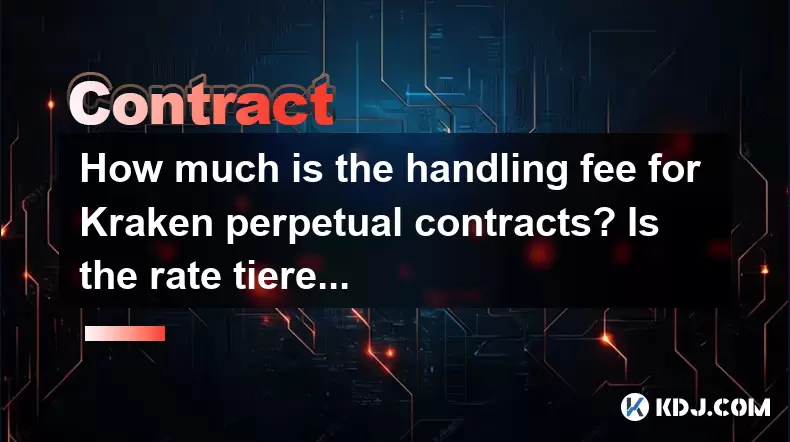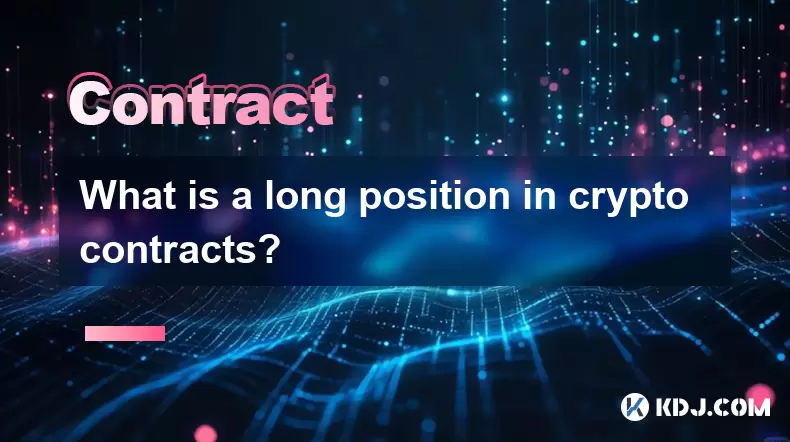-
 Bitcoin
Bitcoin $116700
2.16% -
 Ethereum
Ethereum $3830
5.76% -
 XRP
XRP $3.082
4.56% -
 Tether USDt
Tether USDt $1.000
0.04% -
 BNB
BNB $777.8
1.96% -
 Solana
Solana $173.2
5.46% -
 USDC
USDC $0.0000
0.02% -
 Dogecoin
Dogecoin $0.2146
6.85% -
 TRON
TRON $0.3384
0.92% -
 Cardano
Cardano $0.7676
5.51% -
 Hyperliquid
Hyperliquid $39.28
4.90% -
 Sui
Sui $3.723
9.07% -
 Stellar
Stellar $0.4164
6.32% -
 Chainlink
Chainlink $17.36
5.78% -
 Bitcoin Cash
Bitcoin Cash $580.9
3.62% -
 Hedera
Hedera $0.2544
5.50% -
 Ethena USDe
Ethena USDe $1.001
0.02% -
 Avalanche
Avalanche $22.81
3.81% -
 Litecoin
Litecoin $120.8
3.60% -
 UNUS SED LEO
UNUS SED LEO $8.956
-0.35% -
 Toncoin
Toncoin $3.311
4.28% -
 Shiba Inu
Shiba Inu $0.00001266
4.15% -
 Uniswap
Uniswap $10.10
5.97% -
 Polkadot
Polkadot $3.786
4.80% -
 Dai
Dai $1.000
0.01% -
 Monero
Monero $280.4
-4.02% -
 Bitget Token
Bitget Token $4.405
1.69% -
 Cronos
Cronos $0.1480
5.13% -
 Pepe
Pepe $0.00001087
5.67% -
 Ethena
Ethena $0.6348
11.62%
How much is the handling fee for Kraken perpetual contracts? Is the rate tiered?
Kraken's fee structure for perpetual contracts offers tiered rates based on 30-day volume, with maker fees from 0.02% to 0.00% and taker fees from 0.05% to 0.01%.
May 16, 2025 at 09:00 pm

When trading perpetual contracts on Kraken, understanding the handling fees, also known as trading fees, is crucial for any trader looking to optimize their trading strategy. Kraken's fee structure for perpetual contracts is designed to be competitive and transparent, offering different rates based on the user's trading volume and whether they are a maker or a taker in the trade.
Understanding Maker and Taker Fees
Kraken's fee structure differentiates between maker and taker fees. A maker fee is charged when a trader adds liquidity to the market by placing an order that does not immediately execute, thus creating or "making" a new order in the order book. Conversely, a taker fee is applied when a trader removes liquidity from the market by placing an order that immediately executes against an existing order, thus "taking" an order from the order book.
Standard Fee Rates for Perpetual Contracts
For perpetual contracts, Kraken applies the following standard fee rates:
- Maker Fee: 0.02% of the trade value
- Taker Fee: 0.05% of the trade value
These rates apply to users who do not meet the criteria for any of Kraken's volume-based discounts.
Tiered Fee Structure Based on Trading Volume
Kraken offers a tiered fee structure that rewards users with higher trading volumes with lower fees. The tiers are based on the total trading volume over a 30-day period and are applicable to both maker and taker fees. Below is a detailed breakdown of the tiered fee structure:
Tier 1: 0-50,000 USD volume
- Maker Fee: 0.02%
- Taker Fee: 0.05%
Tier 2: 50,001-100,000 USD volume
- Maker Fee: 0.015%
- Taker Fee: 0.04%
Tier 3: 100,001-250,000 USD volume
- Maker Fee: 0.01%
- Taker Fee: 0.03%
Tier 4: 250,001-500,000 USD volume
- Maker Fee: 0.005%
- Taker Fee: 0.02%
Tier 5: 500,001-1,000,000 USD volume
- Maker Fee: 0.002%
- Taker Fee: 0.015%
Tier 6: 1,000,001+ USD volume
- Maker Fee: 0.00%
- Taker Fee: 0.01%
How to Check Your Trading Volume and Fee Tier
To check your current trading volume and corresponding fee tier on Kraken, follow these steps:
- Log into your Kraken account.
- Navigate to the 'Fees' section under your account settings.
- View your 30-day trading volume and the corresponding fee tier.
This information is updated daily, so it's important to monitor your trading activity to understand your current fee rates.
Calculating Your Fees
To calculate the fees for a specific trade, you need to know the trade value and whether you are acting as a maker or a taker. Here's how to do it:
- Determine the trade value: This is the total value of the trade in USD.
- Identify your fee tier: Based on your 30-day trading volume.
- Apply the appropriate fee rate: Multiply the trade value by the maker or taker fee rate corresponding to your tier.
For example, if you are in Tier 3 and you execute a trade as a maker with a value of $10,000, your fee would be calculated as follows:
- Fee = Trade Value x Maker Fee Rate
- Fee = $10,000 x 0.01%
- Fee = $1
Additional Considerations
It's important to note that Kraken may adjust its fee structure from time to time, so it's advisable to check the latest fee schedule on their website. Additionally, certain promotions or special events might offer reduced fees or fee waivers, which can be beneficial for traders looking to minimize their trading costs.
Frequently Asked Questions
Q: Can I reduce my fees by using Kraken's referral program?
A: Yes, Kraken offers a referral program where you can earn a percentage of the trading fees generated by users you refer to the platform. This can indirectly help reduce your overall trading costs by generating additional income.
Q: Are there any other ways to reduce trading fees on Kraken?
A: Besides the tiered fee structure and referral program, Kraken occasionally runs promotions that can offer reduced fees or fee waivers. Additionally, trading in larger volumes can naturally move you to a lower fee tier, thus reducing your fees.
Q: How often does Kraken update the fee tiers?
A: Kraken updates the fee tiers based on your 30-day trading volume daily. This means that your fee tier can change from day to day depending on your trading activity.
Q: Do the fees for perpetual contracts differ from those for spot trading?
A: Yes, the fee structure for perpetual contracts is different from that of spot trading. While both have maker and taker fees, the rates and tier thresholds can vary. It's important to check the specific fee schedule for each type of trading on Kraken's website.
Disclaimer:info@kdj.com
The information provided is not trading advice. kdj.com does not assume any responsibility for any investments made based on the information provided in this article. Cryptocurrencies are highly volatile and it is highly recommended that you invest with caution after thorough research!
If you believe that the content used on this website infringes your copyright, please contact us immediately (info@kdj.com) and we will delete it promptly.
- BlockchainFX, Bitcoin Swift, Crypto Presales: What's the Hype?
- 2025-08-07 19:10:13
- SHIB Community at Crossroads: Shytoshi Kusama's Leadership Under Scrutiny as Elections Loom
- 2025-08-07 18:30:13
- IREN Overtakes: A New King in the Bitcoin Miner Hashrate Race?
- 2025-08-07 16:31:29
- Memecoins Mania: Whales Eye Pepe Dollar (PEPD) as Bonk Cools Off, While MoonBull Hogs the Spotlight!
- 2025-08-07 16:51:17
- Unilabs, PEPE, and Investment Risk: Navigating the Crypto Hype
- 2025-08-07 16:31:29
- Meme Coin Mania: Rug Pulls, CZ-Inspired Tokens, and the Wild West of Crypto
- 2025-08-07 16:57:14
Related knowledge

What programming languages are used for smart contracts?
Aug 07,2025 at 06:07pm
Understanding Smart Contracts and Their Execution EnvironmentSmart contracts are self-executing programs deployed on blockchain networks that automati...

What is a long position in crypto contracts?
Aug 07,2025 at 06:29pm
Understanding the Concept of a Long Position in Crypto ContractsA long position in crypto contracts refers to a trading strategy where a trader buys a...

Why is my Bitstamp futures position being liquidated?
Jul 23,2025 at 11:08am
Understanding Futures Liquidation on BitstampFutures trading on Bitstamp involves borrowing funds to open leveraged positions, which amplifies both po...

How to report Bitstamp futures for taxes?
Jul 30,2025 at 08:35am
Understanding Bitstamp Futures and Taxable EventsWhen trading Bitstamp futures, it’s essential to recognize that these financial instruments are treat...

Does Bitstamp offer inverse contracts?
Jul 23,2025 at 01:28pm
Understanding Inverse Contracts in Cryptocurrency TradingIn the realm of cryptocurrency derivatives, inverse contracts are a specific type of futures ...

What is the difference between futures and perpetuals on Bitstamp?
Jul 27,2025 at 05:08am
Understanding Futures Contracts on BitstampFutures contracts on Bitstamp are financial derivatives that allow traders to speculate on the future price...

What programming languages are used for smart contracts?
Aug 07,2025 at 06:07pm
Understanding Smart Contracts and Their Execution EnvironmentSmart contracts are self-executing programs deployed on blockchain networks that automati...

What is a long position in crypto contracts?
Aug 07,2025 at 06:29pm
Understanding the Concept of a Long Position in Crypto ContractsA long position in crypto contracts refers to a trading strategy where a trader buys a...

Why is my Bitstamp futures position being liquidated?
Jul 23,2025 at 11:08am
Understanding Futures Liquidation on BitstampFutures trading on Bitstamp involves borrowing funds to open leveraged positions, which amplifies both po...

How to report Bitstamp futures for taxes?
Jul 30,2025 at 08:35am
Understanding Bitstamp Futures and Taxable EventsWhen trading Bitstamp futures, it’s essential to recognize that these financial instruments are treat...

Does Bitstamp offer inverse contracts?
Jul 23,2025 at 01:28pm
Understanding Inverse Contracts in Cryptocurrency TradingIn the realm of cryptocurrency derivatives, inverse contracts are a specific type of futures ...

What is the difference between futures and perpetuals on Bitstamp?
Jul 27,2025 at 05:08am
Understanding Futures Contracts on BitstampFutures contracts on Bitstamp are financial derivatives that allow traders to speculate on the future price...
See all articles

























































































